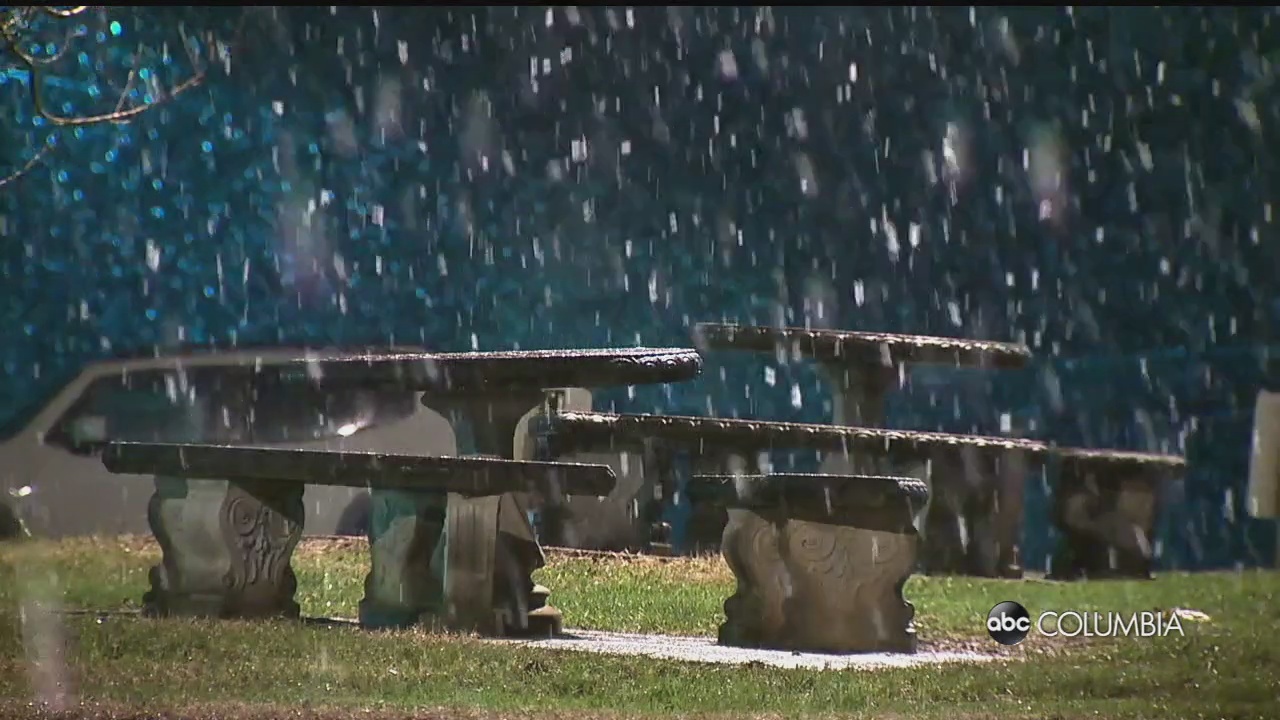Winter Weather Advisory: Yeah, so, we’re diving into what happens when the weather turns seriously nasty. Think snow, ice, wind – the whole shebang. We’ll break down the differences between a watch, warning, and advisory, so you know exactly what level of “oh crap” we’re dealing with. We’ll also cover how these advisories impact everything from your morning commute to your weekend plans (and how to totally ace dealing with them).
We’ll explore how transportation systems get slammed, how daily life gets totally disrupted, and what you need to do to stay safe and maybe even have a little fun in the snow (if you’re into that sort of thing). We’ll also look at how the weather service gets the word out and what you should be doing to stay informed.
It’s basically your survival guide to winter weather mayhem.
Winter Weather Advisory: Understanding and Preparing
Winter weather advisories are crucial tools used by meteorological agencies to inform the public about impending hazardous conditions. Understanding their scope, impacts, and communication strategies is vital for ensuring personal safety and community preparedness.
Definition and Scope of a Winter Weather Advisory
A Winter Weather Advisory signifies that hazardous winter weather is likely to occur. It’s less severe than a warning but still indicates conditions that could significantly impact travel and daily activities. Meteorological agencies, like the National Weather Service (NWS) in the US, use various criteria, including projected snowfall amounts, ice accumulation, and wind speeds, to issue these advisories. These criteria vary based on location and historical weather patterns for that specific area.
Differences Between Winter Weather Alerts, Winter Weather Advisory
It’s important to distinguish between a Winter Weather Advisory, a Winter Storm Warning, and a Winter Storm Watch. A Winter Storm Watch indicates that hazardous winter weather is
-possible* within a specified time frame. A Winter Storm Warning signifies that severe winter weather is
-occurring*,
-imminent*, or
-highly likely*. A Winter Weather Advisory falls in between, indicating conditions are likely to cause significant inconveniences, but not necessarily the severe impact of a warning.
| Alert Level | Description | Expected Conditions | Recommended Actions |
|---|---|---|---|
| Winter Storm Watch | Hazardous winter weather is possible. | Potential for significant snowfall, ice accumulation, or high winds. | Monitor forecasts, prepare emergency supplies, and make contingency plans. |
| Winter Weather Advisory | Hazardous winter weather is likely. | Moderate snowfall, light icing, or moderate winds. Travel may be difficult. | Use caution while driving, avoid unnecessary travel if possible, and stay informed. |
| Winter Storm Warning | Severe winter weather is occurring, imminent, or highly likely. | Heavy snowfall, significant ice accumulation, or very high winds. Travel is extremely dangerous. | Stay indoors if possible, avoid travel unless absolutely necessary, and monitor official sources for updates. |
Typical Weather Conditions During a Winter Weather Advisory
A Winter Weather Advisory typically involves conditions that make travel difficult, but not necessarily life-threatening. This might include snowfall rates of 1 to 3 inches per hour, ice accumulation of less than a quarter of an inch, and wind gusts up to 35 mph. The specific thresholds vary by region and the NWS forecast office issuing the advisory.
Impacts of Winter Weather Advisories on Transportation
Winter weather advisories significantly impact various modes of transportation, leading to disruptions and potential hazards. Understanding these impacts is critical for safe and efficient travel during winter storms.
Impact on Road Travel
Reduced visibility due to snow or blowing snow, icy roads, and potential road closures are common during a Winter Weather Advisory. Bridges and overpasses often freeze first, posing additional risks. Accidents and traffic delays are frequent occurrences. For example, during a 2022 advisory in the Midwest, numerous accidents occurred on major highways due to black ice, causing significant traffic congestion and delays.
Impact on Air Travel
Winter weather can cause significant disruptions to air travel. Flight delays and cancellations are common, particularly in areas experiencing heavy snowfall or icing. Airlines often proactively cancel flights to avoid stranding passengers or damaging aircraft. The 2014 winter storm that impacted the East Coast of the United States led to thousands of flight cancellations and widespread travel disruptions.
Impact on Public Transportation
Public transportation systems, including buses and trains, often experience delays or cancellations during winter weather advisories. Icy conditions can make it difficult for buses to operate safely, and train tracks can become blocked by snow. Many cities utilize salt trucks and snowplows to mitigate these effects, but significant delays are often unavoidable.
Decision-Making for Drivers During Winter Weather
Drivers need to make informed decisions about travel during winter weather advisories. A clear decision-making process is essential for safety.
Impacts of Winter Weather Advisories on Daily Life: Winter Weather Advisory
Winter weather advisories can disrupt various aspects of daily life, impacting routines, essential services, and community preparedness. Understanding these impacts allows for better planning and response.
Disruption to Daily Routines
School closures, work delays, and cancellations of social events are common occurrences during winter weather advisories. Many businesses may experience reduced productivity due to employee absences or delayed deliveries. The disruption can significantly impact daily routines and schedules.
Challenges to Essential Services
Healthcare, emergency response, and power supply can be significantly challenged during winter storms. Ambulances and emergency vehicles may face difficulties navigating icy roads, impacting response times. Power outages due to ice-laden power lines are a common occurrence, affecting homes and businesses. Hospitals and healthcare facilities often implement contingency plans to ensure continued service.
Community Preparation and Response
Communities often implement proactive measures to mitigate the impacts of winter weather advisories. This includes pre-treating roads with salt, deploying snowplows, and establishing emergency shelters. Public awareness campaigns educate residents on winter preparedness and safety measures.
Preparedness Tips for Individuals and Families
- Assemble an emergency kit with essential supplies, including food, water, medications, and warm clothing.
- Charge electronic devices and have backup power sources available.
- Check on vulnerable neighbors and family members.
- Stay informed about weather updates and follow official advisories.
- Prepare your vehicle for winter driving conditions.
Communicating Winter Weather Advisories

Source: dailycaller.com
Effective communication is critical for ensuring the public understands the potential impacts of a Winter Weather Advisory and takes appropriate precautions. Various methods are employed to disseminate this crucial information.
Methods of Dissemination
Meteorological agencies utilize a variety of methods to communicate winter weather advisories, including television, radio, social media, and mobile alerts (like those from the National Weather Service). These methods ensure wide reach and accessibility to the public. The use of multiple channels allows for redundancy and ensures information reaches even those without access to all platforms.
Importance of Clear Communication
Clear and concise communication is paramount in conveying the urgency and potential impact of a Winter Weather Advisory. Using simple language, avoiding technical jargon, and highlighting key information, such as timing and expected conditions, are essential for effective communication. Ambiguity can lead to confusion and potentially dangerous decisions.
Comparison of Communication Strategies
Different agencies may employ slightly different communication strategies, depending on their resources and target audience. Some agencies may focus on social media engagement, while others prioritize traditional media outlets. However, the overarching goal remains the same: to provide timely and accurate information to the public.
Sample Public Service Announcement (PSA) Script
“This is a Winter Weather Advisory from the National Weather Service. Hazardous winter weather conditions are expected to begin at 6 PM today and continue until 6 AM tomorrow. Expect snowfall of 2-4 inches and icy conditions. Use caution while driving, reduce your speed, and allow extra time for travel. Stay informed by monitoring weather updates on our website and mobile app.”
Visual Representation of Winter Weather Advisory Impacts
Visualizing the impacts of a Winter Weather Advisory helps to understand its real-world consequences. Let’s consider a few scenarios to illustrate these effects.
Suburban Community Scenario
Imagine a suburban community blanketed in a light layer of snow. Visibility is reduced to about a half-mile due to falling snow and blowing snow. Roads are slushy and icy in patches. Pedestrians are bundled in heavy coats, hats, and scarves, moving cautiously on the sidewalks. Cars are driving slowly, many with their headlights on.
The overall atmosphere is quiet and subdued, with a sense of cautiousness prevailing.
Freezing Rain on Power Lines and Trees
Freezing rain coats power lines and tree branches with a layer of ice, weighing them down. The added weight causes power lines to sag and potentially snap, leading to power outages. Tree branches, heavy with ice, can break and fall, causing damage to property and potentially injuring people. The accumulation of ice on trees is significant, creating a hazardous and potentially dangerous situation.
Snow Accumulation and Traffic Flow
A significant accumulation of snow has transformed the roads into a slow-moving, hazardous landscape. Cars, SUVs, and trucks are navigating the snow-covered streets, often at reduced speeds. Pedestrians are struggling to make their way through the snowdrifts, many bundled in winter jackets, hats, gloves, and scarves. The atmosphere is characterized by a slow, steady pace, with people moving cautiously and carefully.
Last Word
So, next time you hear “Winter Weather Advisory,” you’ll be totally prepped. You’ll know the difference between the various alerts, how to navigate tricky road conditions, and how to stay safe and warm (and maybe even score some extra Netflix time!). Remember, being prepared is key – it’s all about staying informed and making smart choices. Stay cozy, and stay safe out there!



